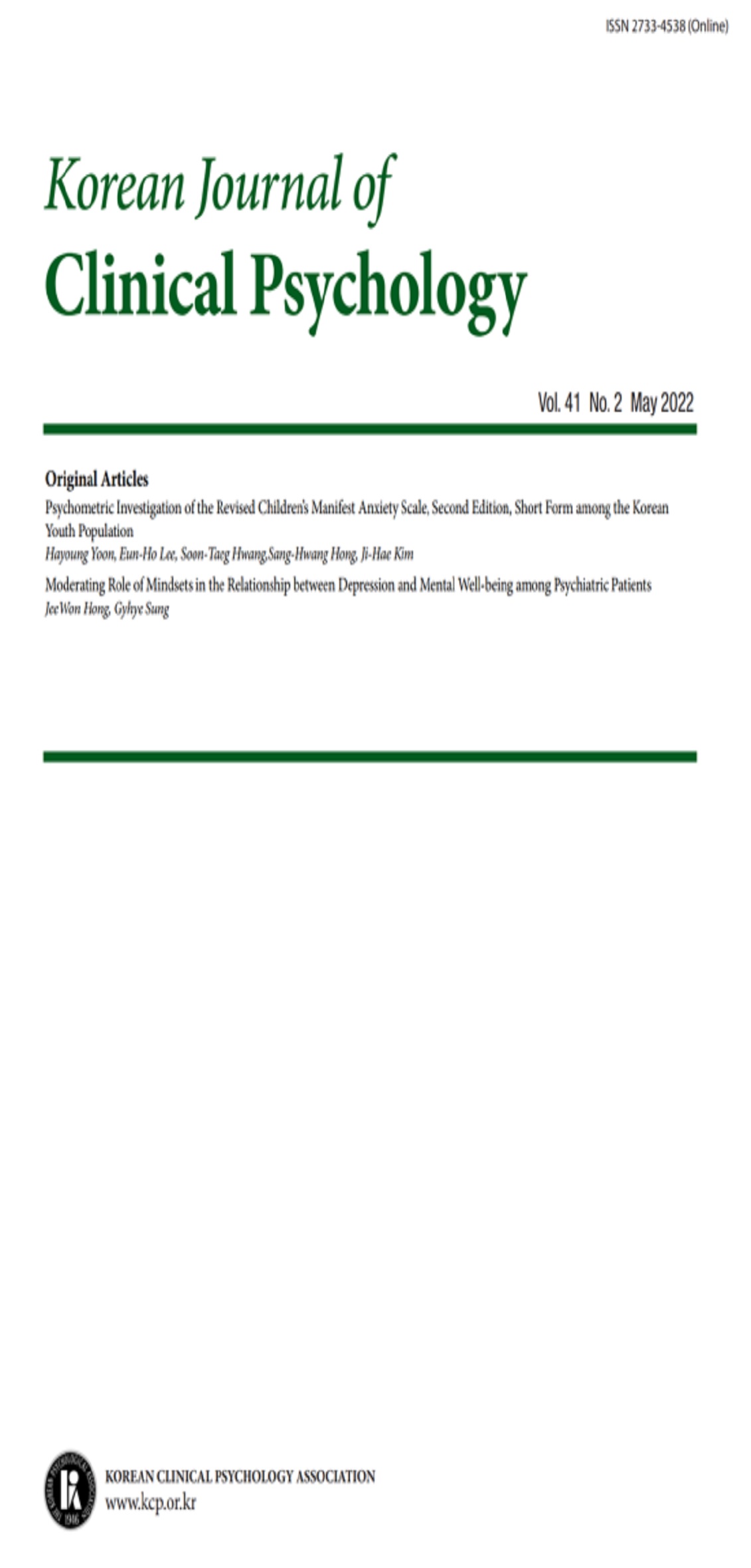open access
메뉴
open access
메뉴 E-ISSN : 2733-4538
E-ISSN : 2733-4538

본 연구에서는 Snyder(1979)의 결혼 만족도 검사(MSI)를 한국실정에 맞게 번안, 수정하고, 두 번의 예비검사를 거쳐 한국판 결혼 만족도 검사(K-MSI)의 최종 문항을 선정하여 이에 대한 신뢰도와 타당도를 살펴보았다. 한국판 결혼 만족도 검사(K-MSI)에는 타당도를 재는 2개 척도(비일관적 반응 척도, 관습적 반응 척도)와 결혼 만족도를 재는 12개 척도 총 14개 하위 척도가 있다(전반적 불만족 척도, 정서적 의사소통 문제 척도, 문제해결 의사소통 문제 척도, 공격행동 척도, 공유시간 갈등 척도, 경제적 갈등 척도, 성적 불만족 척도, 관습적 성역할 태도 척도, 원가족 문제 척도, 배우자 가족과의 갈등 척도, 자녀 불만족 척도, 자녀 양육 갈등 척도). 배우자 가족과의 갈등 척도는 원검사에는 없던 척도로 우리 나라의 사회문화적 배경을 고려할 때 결혼 만족도 평가에 필요하다고 보아 새로이 제작하여 포함시켰다. K-MSI의 표준화를 위해 서울, 경기 지역에 거주하는 기혼 남자 440명, 기혼 여자 540명에게 K-MSI를 실시하였다. 그 결과 각 하위 척도의 내적 일치도 계수는 .71~.92로 나왔으며, 이 중 30명의 피검자에게 2주간 간격으로 K-MSI를 실시하여 .70~.96의 검사-재검사 신뢰도 계수를 얻었다. 또한 이들 집단을 대상으로 성, 연령, 학력, 가계수입, 직업이 K-MSI의 각 하위 척도에 미치는 영향을 살펴보았다. 주성분 분석방법을 사용하여 K-MSI를 요인분석한 결과 단일 요인이 추출되었으며 변량의 43.37%를 설명하는 것으로 나타나, 우리나라 부부들의 결혼 만족도가 단일요인으로 구성될 가능성을 시사한다.
The purpose of the present study was to develop the Korean Marital Satisfaction Inventory. The Korean Marital Satisfaction Inventory(K-MSI) consists of two validity scales(Inconsistency and Conventionalization) and one global affective scale(Global Distress), and eleven additional scales measuring specific dimensions of relationship distress(Affective Communication, Problem Solving Communication, Aggression, Time Together, Disagreement About Finances, Sexual Dissatisfaction, Role Orientation, Family History of Distress, Conflict With In-Laws, Dissatisfaction With Children, Conflict Over Child Rearing). The Conflict With In-Laws scale was developed to assess conflicts in relationship with in-laws. Two preliminary studies for selecting items by item analysis were executed and the final 160 items were administered to 440 married men, 540 married women residing in Seoul and Kyung-gi area for standardization. The effects of the demographic variables such as gender, age, education, family income and job were examined. Coefficients of internal consistency of individual scales ranged from .71 to .92 and the coefficients of temporal stability(test-retest) ranged from .70 to .96. Results of factor analysis with Principal Component Analysis indicated the existence of single factor, explaining 43.37 percent of total variance. Overall, results suggested a high internal consistency, test-retest reliability and construct validity. Implications for use of the instrument both as a clinical tool and a research instrument are discussed.
